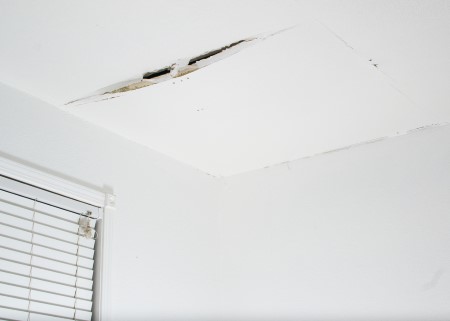6 Water Damage Remediation Do's and also Don'ts.
6 Water Damage Remediation Do's and also Don'ts.
Blog Article
What're your thoughts and feelings about Safety Tips To Prevent Fire And Water Damage?

Water offers life, water invasion on parts where it's not meant to be can result in damages. If the water soaks right into your framework, it can peel off away surfaces as well as deteriorate the foundation. Mold as well as mold likewise thrive in a damp atmosphere, which can be dangerous for your health and wellness. Houses with water damage smell stuffy and old.
Water can come from many sources such as tropical storms, floodings, ruptured pipes, leaks, as well as sewer issues. In case you experience water damage, it would be great to know some safety and security preventative measures. Here are a couple of guidelines on how to handle water damage.
Do Prioritize Home Insurance Policy Protection
Water damages from flood dues to heavy winds is seasonal. However, you can likewise experience a sudden flooding when a faulty pipeline suddenly breaks into your residence. It would certainly be best to have residence insurance policy that covers both acts of God such as all-natural calamities, as well as emergencies like busted plumbing.
Don't Neglect to Switch Off Utilities
In the event of a calamity, particularly if you stay in a flood-prone location, it would be suggested to switch off the primary electric circuit. This cuts off power to your entire house, protecting against electrical shocks when water can be found in as it is a conductor. Do not forget to turn off the primary water line valve. When floodwaters are high, furniture will certainly move as well as trigger damages. Having the main valve shut off prevents further damages.
Do Remain Proactive and Heed Climate Alerts
Tornado floods can be extremely uncertain. Remain positive and prepared if there is a history of flooding in your area. Listen to emptying cautions if you live near a creek, lake, or river . Obtain valuables from the first stage as well as basement, after that placed them on the highest possible level. Doing so minimizes potential residential property damage.
Do Not Overlook the Roofing System
You can prevent rain damage if there are no openings and also leakages in your roofing. This will protect against water from moving down your walls and soaking your ceiling.
Do Take Notice Of Small Leaks
A ruptured pipe doesn't take place over night. You might observe gurgling paint, peeling wallpaper, water touches, water stains, or trickling audios behind the wall surfaces. Have your plumbing repaired prior to it results in substantial damages.
Don't Panic in Case of a Ruptured Pipeline
Keeping your presence of mind is crucial in a time of situation. Stressing will only intensify the trouble because it will certainly suppress you from acting quickly. When it concerns water damages, timing is crucial. The longer you wait, the even more damage you can expect. Therefore, if a pipeline bursts in your home, instantly turned off your major water valve to remove the resource. Disconnect all electric outlets in the location or transform off the circuit breaker for that component of the residence. Call a credible water damage remediation expert for help.
Water provides life, water intrusion on components where it's not meant to be can result in damage. Houses with water damages smell mildewy as well as old.
Water damages from flooding fees to hefty winds is seasonal. You might discover gurgling paint, peeling off wallpaper, water touches, water stains, or dripping audios behind the wall surfaces. When it comes to water damages, timing is crucial.
Some Do's & Don't When Dealing with a Water Damage
DO:
Make sure the water source has been eliminated. Contact a plumber if needed. Turn off circuit breakers supplying electricity to wet areas and unplug any electronics that are on wet carpet or surfaces Remove small furniture items Remove as much excess water as possible by mopping or blotting; Use WHITE towels to blot wet carpeting Wipe water from wooden furniture after removing anything on it Remove and prop up wet upholstery cushions for even drying (check for any bleeding) Pin up curtains or furniture skirts if needed Place aluminum foil, saucers or wood blocks between furniture legs and wet carpet Turn on air conditioning for maximum drying in winter and open windows in the summer Open any drawers and cabinets affected for complete drying but do not force them open Remove any valuable art objects or paintings to a safe, dry place Open any suitcases or luggage that may have been affected to dry, preferably in sunlight Hang any fur or leather goods to dry at room temperature Punch small holes in sagging ceilings to relieve trapped water (don't forget to place pans beneath!); however, if the ceiling is sagging extremely low, stay out of the room and we'll take care of it DO NOT:
Leave wet fabrics in place; dry them as soon as possible Leave books, magazines or any other colored items on wet carpets or floor Use your household vacuum to remove water Use TV's or other electronics/appliances while standing on wet carpets or floors; especially not on wet concrete floors Turn on ceiling fixtures if the ceiling is wet Turn your heat up, unless instructed otherwise

Do you like more info about Reducing Your Risk Of Water And Fire Damage At Home? Put a review down the page. We'd be interested to hear your ideas about this write up. We hope that you visit us again in the near future. Those who enjoyed our blog entry please do not forget to pass it around. Thanks so much for taking the time to read it.
Report this page